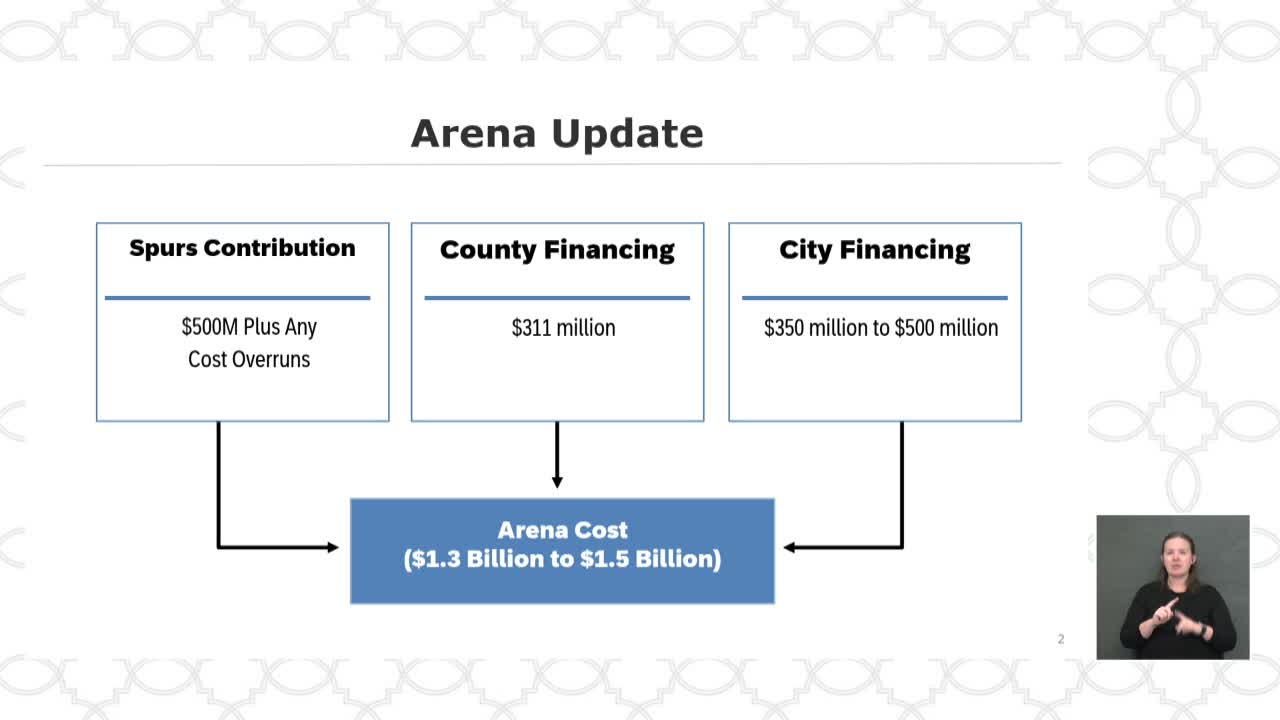San Antonio Spurs commit $500M to arena project amid tax proposals
August 06, 2025 | San Antonio, Bexar County, Texas
This article was created by AI summarizing key points discussed. AI makes mistakes, so for full details and context, please refer to the video of the full meeting. Please report any errors so we can fix them. Report an error »

In a recent city council meeting, San Antonio officials discussed a significant financial plan aimed at funding a new arena, projected to cost between $1.3 billion and $1.5 billion. The plan includes contributions from the San Antonio Spurs, who will provide $500 million, and additional funding from Bexar County, which is expected to contribute $311 million. The city is also looking to raise between $350 million and $500 million through various taxes and bonds.
Key to this funding strategy is a proposed increase in the hotel occupancy tax, which would rise from 1.75% to 2%, the maximum allowed by state law. This increase is expected to generate additional revenue that will be redirected to support the arena project. Additionally, a vehicle rental tax (VRT) is being considered, which would also contribute to the funding if approved in an upcoming vote.
City officials emphasized the importance of flexibility in using these funds, particularly for supporting facilities like the Alamodome and convention centers. The financial plan includes a 30-year collection period for the hotel tax, starting in 2026, which is anticipated to grow over time and provide a steady revenue stream for the city.
The council also discussed the potential for mixed-use development around the new arena, which could enhance economic opportunities in the area. This development is seen as crucial for ensuring the financial viability of the arena and surrounding projects.
As the city moves forward, officials are focused on finalizing the terms of the funding and ensuring that the necessary developments are in place to support the financial commitments. The next steps will involve detailed planning and community engagement to align the project with broader city goals and public needs.
Key to this funding strategy is a proposed increase in the hotel occupancy tax, which would rise from 1.75% to 2%, the maximum allowed by state law. This increase is expected to generate additional revenue that will be redirected to support the arena project. Additionally, a vehicle rental tax (VRT) is being considered, which would also contribute to the funding if approved in an upcoming vote.
City officials emphasized the importance of flexibility in using these funds, particularly for supporting facilities like the Alamodome and convention centers. The financial plan includes a 30-year collection period for the hotel tax, starting in 2026, which is anticipated to grow over time and provide a steady revenue stream for the city.
The council also discussed the potential for mixed-use development around the new arena, which could enhance economic opportunities in the area. This development is seen as crucial for ensuring the financial viability of the arena and surrounding projects.
As the city moves forward, officials are focused on finalizing the terms of the funding and ensuring that the necessary developments are in place to support the financial commitments. The next steps will involve detailed planning and community engagement to align the project with broader city goals and public needs.
View full meeting
This article is based on a recent meeting—watch the full video and explore the complete transcript for deeper insights into the discussion.
View full meeting
